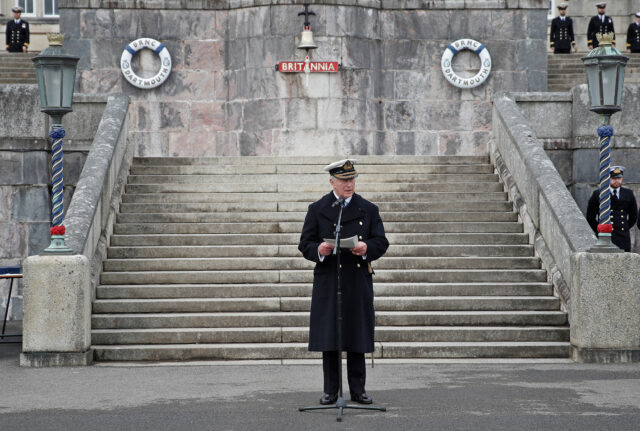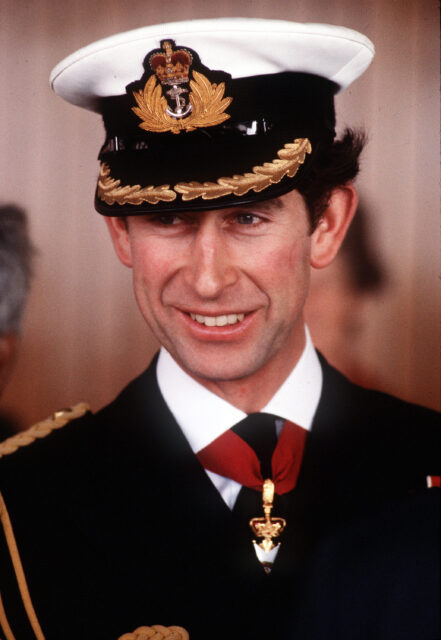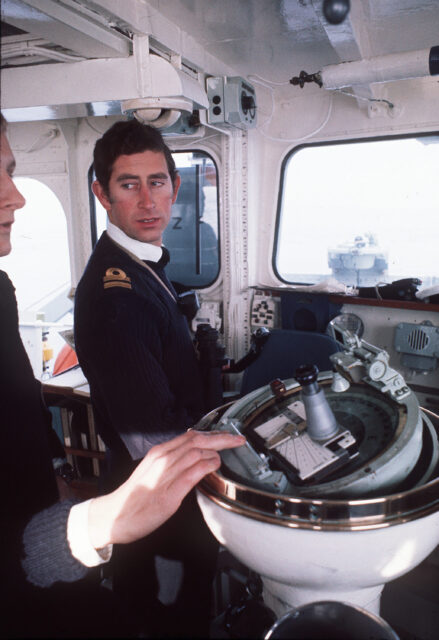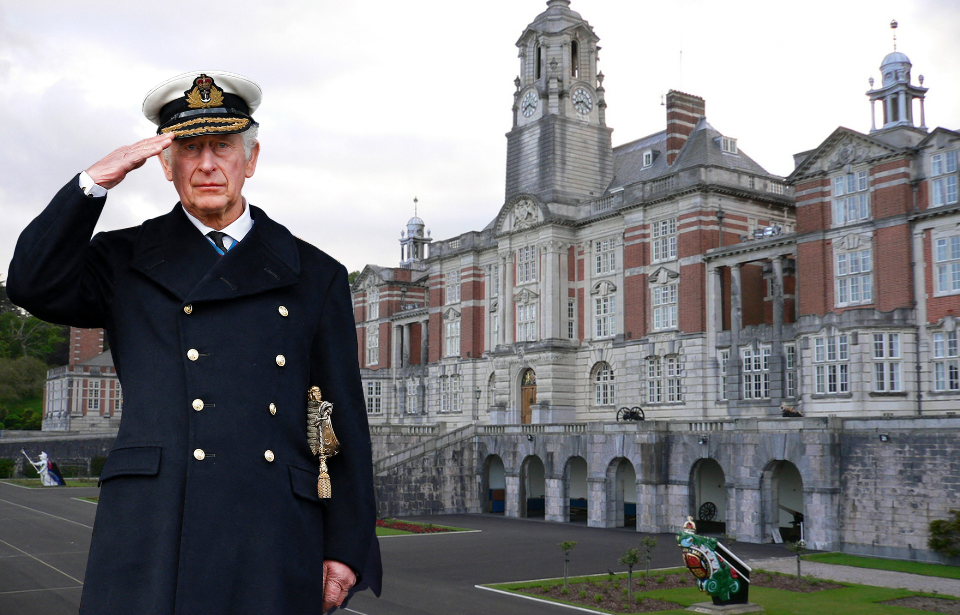King Charles III has a long-standing relationship with the armed forces. As Prince of Wales, a position he held for 64 years until his ascension to the throne in September of 2022, he served in various honorary military appointments for regiments, navies, and air forces, in the United Kingdom and across the Commonwealth.
His connection with the military goes far beyond honorary appointments and includes his active service with the Royal Air Force and the Royal Navy during the 1970s. After learning to fly with the Cambridge University Air Squadron and earning his RAF wings in August 1971, he went on to serve as an officer in the Royal Navy. While this service was characterized by his professionalism, he also showed his fun and rebellious side.
Britannia Royal Naval College

Training began at Britannia Royal Naval College in 1863, on two moored ships in the river adjacent to the estate of Sir Walter Raleigh. In 1902, King Edward VII laid the foundation stone of the current college buildings, which were completed and opened for training in 1905. Apart from the forced removal of training officers following the bombing of the College in September 1942, Britannia Royal Naval College has long been the home of British naval officer training.
Following in the footsteps of his father, Prince Philip, Duke of Edinburgh, Prince Charles, then Prince of Wales, attended the College. He graduated as a Sub Lieutenant in 1971.
After graduating, Prince Charles went on to serve on the guided-missile destroyer HMS Norfolk from 1971 to 1972, the frigates HMS Minerva from 1972 through 1973, and HMS Jupiter in 1974. He then qualified as a helicopter pilot at RNAS Yeovilton and flew with 845 Naval Air Squadron aboard HMS Hermes. The last ten months of his active Royal Navy career saw him command the minehunter HMS Bronington in 1976.
King Charles has a rebellious side

The Princes of Wales, most notoriously the future King Edward VII, have had a reputation for being rebellious. King Charles seems to have the trait as well. One remnant of Prince Charles’ time at Britannia Royal Naval College is his signature on the ceiling of the wardroom.
According to Dr. Jane Harrold, the college’s historian, “It used to be a tradition for people to sign the ceiling in the wardroom, usually after a mess dinner, usually after quite a bit of alcohol… had been consumed.” It was no simple task to sign the ceiling, and according to Dr. Harrold, it “would have been achieved by standing on top of a human pyramid.”
She added, “So literally layers of rugby scrums, essentially, and he would have climbed to the top of that and added his signature to the ceiling, literally leaving his mark on Dartmouth.” The ceiling, once filled with signatures, has largely been painted over, with only four Royal signatures remaining, including King Charles’.

The most rebellious story of his time here involves Prince Charles riding a motorcycle down the main corridor of the college. As the legend goes, Charles rode from one end to the other. Upon reaching the end, he was met by the wife of the college’s captain, receiving an almighty scolding.
More from us: He is the Third King Charles. Who Were the Other Two?
Dr. Harold, however, can’t confirm that this story actually took place. She said, “I’ve spoken to people who were here at the time, and they almost 50/50 swear that he did and that he didn’t.” While we aren’t certain that the future King of England rode a motorcycle inside Britannia Royal Naval College, we like to think he did.
Share your thoughts in the comments below!
